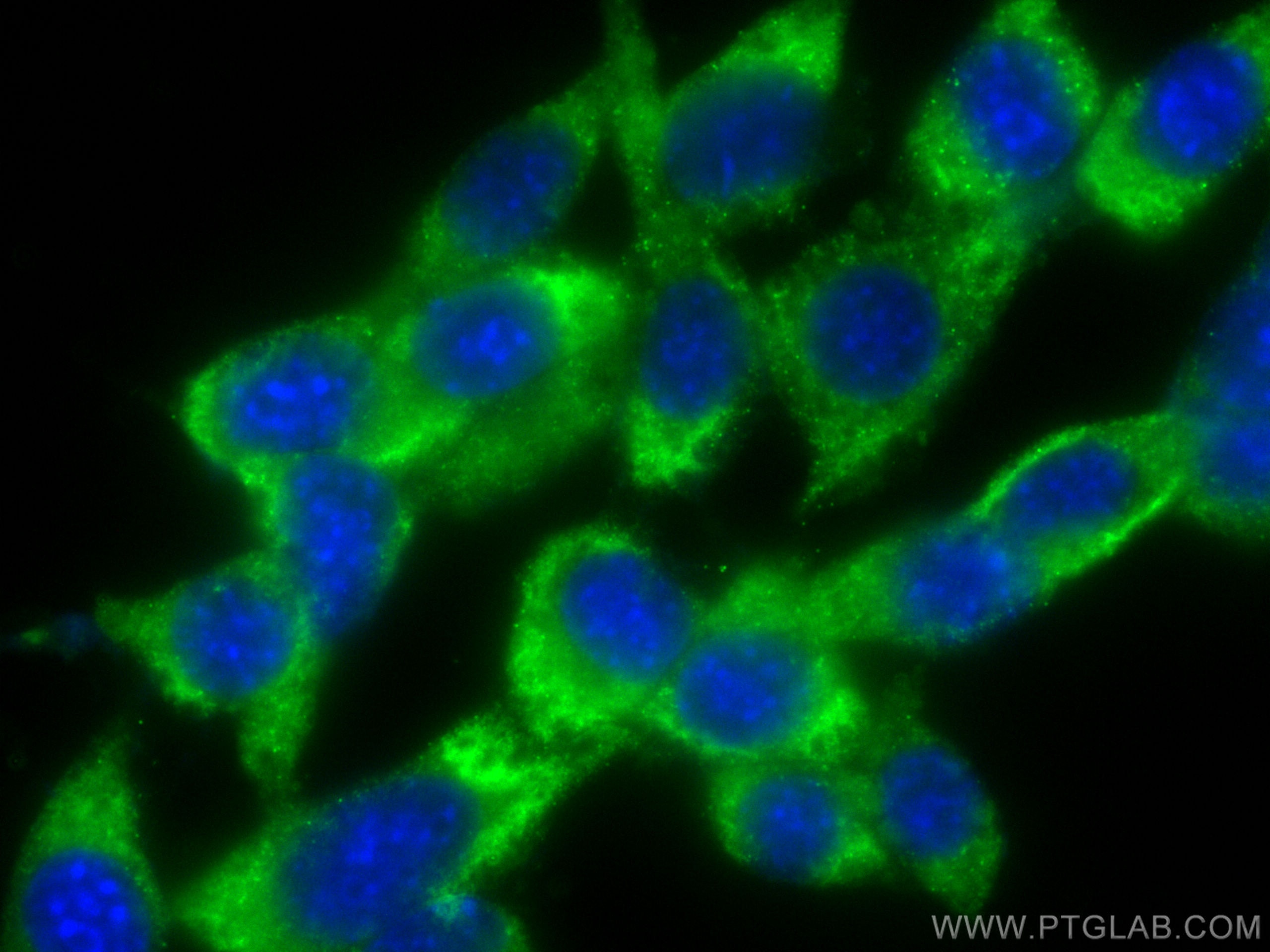Tested Applications
| Positive IF/ICC detected in | NIH/3T3 cells |
Recommended dilution
| Application | Dilution |
|---|---|
| Immunofluorescence (IF)/ICC | IF/ICC : 1:50-1:500 |
| It is recommended that this reagent should be titrated in each testing system to obtain optimal results. | |
| Sample-dependent, Check data in validation data gallery. | |
Product Information
CL488-68124 targets LPIN1 in IF/ICC applications and shows reactivity with Human, Rat, Mouse samples.
| Tested Reactivity | Human, Rat, Mouse |
| Host / Isotype | Mouse / IgG2a |
| Class | Monoclonal |
| Type | Antibody |
| Immunogen |
CatNo: Ag25813 Product name: Recombinant human LPIN1 protein Source: e coli.-derived, PET28a Tag: 6*His Domain: 301-460 aa of BC030537 Sequence: ICDKSHFQAIHSESSDTFSDQSPTLVGGALLDQNKPQTEMQFVNEEDLETLGAAAPLLPMIEELKPPSASVVQTANKTDSPSRKRDKRSRHLGADGVYLDDLTDMDPEVAALYFPKNGDPSGLAKHASDNGARSANQSPQSVGSSGVDSGVESTSDGLRD Predict reactive species |
| Full Name | lipin 1 |
| Calculated Molecular Weight | 890 aa, 99 kDa |
| Observed Molecular Weight | 130 kDa |
| GenBank Accession Number | BC030537 |
| Gene Symbol | LPIN1 |
| Gene ID (NCBI) | 23175 |
| RRID | AB_3084407 |
| Conjugate | CoraLite® Plus 488 Fluorescent Dye |
| Excitation/Emission Maxima Wavelengths | 493 nm / 522 nm |
| Form | Liquid |
| Purification Method | Protein A purification |
| UNIPROT ID | Q14693 |
| Storage Buffer | PBS with 50% glycerol, 0.05% Proclin300, 0.5% BSA, pH 7.3. |
| Storage Conditions | Store at -20°C. Avoid exposure to light. Stable for one year after shipment. Aliquoting is unnecessary for -20oC storage. |
Background Information
LPIN1, also named as KIAA0188, belongs to the lipin family.It is a magnesium-dependent phosphatidate phosphatase enzyme which catalyzes the conversion of phosphatidic acid to diacylglycerol during triglyceride, phosphatidylcholine and phosphatidylethanolamine biosynthesis and therefore controls the metabolism of fatty acids at different levels. LPIN1 has a molecular weight of about 99 kDa but predicted bands around 130 kDa.(PMID:20231281, PMID:29765047).
Protocols
| Product Specific Protocols | |
|---|---|
| IF protocol for CL Plus 488 LPIN1 antibody CL488-68124 | Download protocol |
| Standard Protocols | |
|---|---|
| Click here to view our Standard Protocols |




